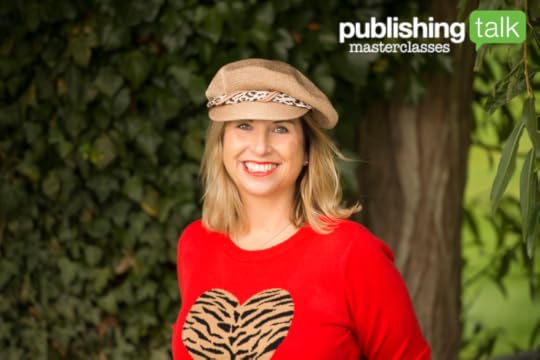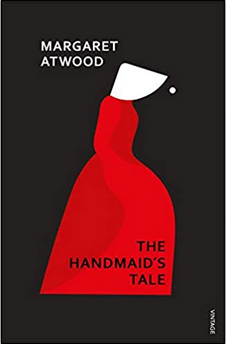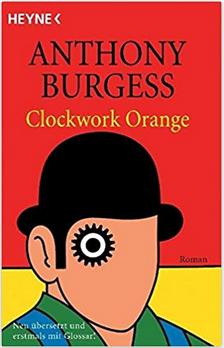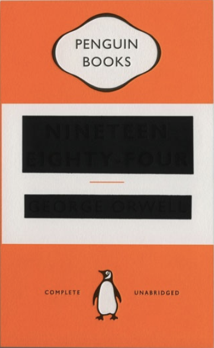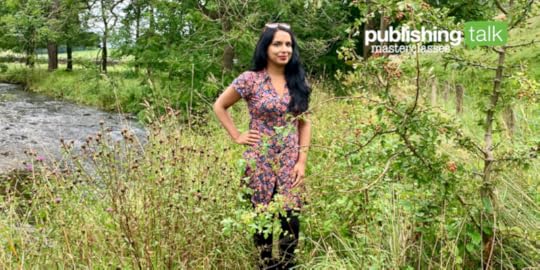Jon Reed's Blog, page 3
May 20, 2021
MASTERCLASS: How to Become a Kindle Bestseller – with Nicola May
Join self-publishing sensation Nicola May in conversation with Jon Reed. Find out how she became the #1 Kindle bestselling author – and how you can too.
Available on demand to Publishing Talk members.
Watch NowHow to get to #1 on Kindle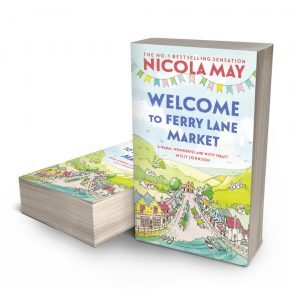 Have you been thinking of publishing a Kindle ebook? Perhaps as a way to earn some extra income? There’s never been a better time: people are reading more than ever. We’re delighted to welcome chart-topping self-published author Nicola May back for another illuminating masterclass, in which she’ll reveal her top tips for sales success.
Have you been thinking of publishing a Kindle ebook? Perhaps as a way to earn some extra income? There’s never been a better time: people are reading more than ever. We’re delighted to welcome chart-topping self-published author Nicola May back for another illuminating masterclass, in which she’ll reveal her top tips for sales success.
The Corner Shop in Cockleberry Bay, book 1 in Nicola’s bestselling Cockleberry Bay series, became the #1 bestselling Kindle book across all genres in the UK in 2019, gathered thousands of five-star reviews on Amazon, and led to three more books in the series. But how did she do it? All will be revealed in this essential masterclass for any author who wants to become a bestseller.
In July the first book in Nicola’s new series, Welcome to Ferry Lane Market, is published by Hodder Books. Having experienced publishing as both a traditionally published and indie author, we will also consider the pros and cons of each approach.
How to become a bestsellerWhat we will coverWhat it takes to become a Kindle bestsellerThe pros and cons of self-publishing v. traditional publishingHow to spot trends and write what people want to readWriting in genres and seriesThe Kindle Direct Publishing (KDP) platformThe essential self-publishing tools and services that Nicola usesNicola’s top tips for marketing your book.Workshop includes:Valuable insights, tips and advice from Nicola MayYour chance to ask Nicola anything about self-publishingA PDF resource with Nicola’s top tips for self-publishing successAccess to a video replay of the event.Watch NowAbout Nicola May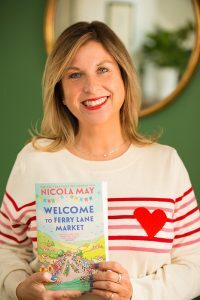 Nicola May is a rom-com superstar. She is the author of a dozen romantic comedies, all of which have appeared in the Kindle bestseller charts, including the #1 bestselling The Corner Shop in Cockleberry Bay.
Nicola May is a rom-com superstar. She is the author of a dozen romantic comedies, all of which have appeared in the Kindle bestseller charts, including the #1 bestselling The Corner Shop in Cockleberry Bay.
Two of them won awards at the Festival of Romance, and another was named ebook of the week in The Sun. Described by Winifred Robinson of BBC Radio 4’s You and Yours as ‘the invisible bestselling author’, Nicola campaigned successfully for the introduction of ebook charts in the publishing trade press.
In November 2020 she also signed a three-book deal with Hodder. The first book in that series, Welcome to Ferry Lane Market, publishes on 22nd July 2021. See Nicola May’s interview on this blog for more details.
You can find all books by our masterclass speakers in our Publishing Talk Bookshop.org Bookshop, which also helps support local independent bookshops in the UK.
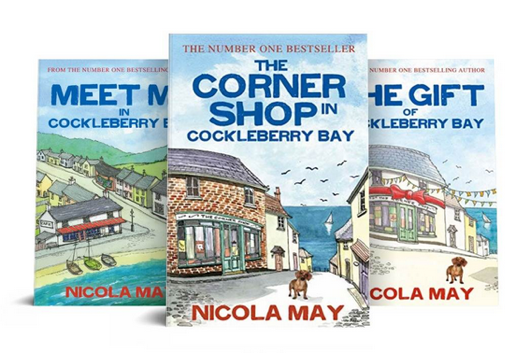
Our online masterclasses are talks, interviews, seminars and workshops from successful authors, publishers, agents and industry experts designed to help you fulfil your potential as an author. Find out more on our masterclasses page.
Available on demand to Publishing Talk members.
Watch NowTweets about this masterclass
Feeling SUPER inspired after a wonderful online masterclass with the one & only @nicolamay1
Amazing. So happy I signed up!
Thank you so much, Nicola! pic.twitter.com/HkcRKriUXT
— Isabella May (@IsabellaMayBks) December 9, 2020
It was a really inspiring talk, I agree. Thanks Nicola! @nicolamay1 @jonreed @publishingtalk Such an interesting writing journey.
— Lizzie Chantree (@Lizzie_Chantree) December 10, 2020
What a fabulous session! Thanks so much @publishingtalk and @nicolamay1 Looking forward to the next one.
— Elaine Spires (@ElaineSWriter) December 9, 2020
The post MASTERCLASS: How to Become a Kindle Bestseller – with Nicola May appeared first on Publishing Talk.


May 18, 2021
MASTERCLASS: How to Create a Setting – with Liz Fenwick
Award-winning author Liz Fenwick shows you how to use setting as a character and to transport your reader to a place and time.
Available on demand to Publishing Talk members.
Watch NowHow to Create a Setting – with Liz FenwickHave you read a book where you felt the wind, tasted the air, and shivered with the protagonist? Learn how to use the setting to breathe life and an extra dimension into your stories. Discover tools to bring your location alive.
Liz Fenwick, according to The Guardian is ‘the queen of the Cornish contemporary novel’, and has used location as her brand. Her books are immersed in Cornwall past and present. How does she make this happen?
How do you create a setting? How does setting work in a novel? Is it more than just a mark on the map?
What we will cover:How setting is not just descriptionHow to use the physical world as a way to open up your characters’ thoughtsHow to visualize your setting to build your world – and storyWhy setting isn’t just a place on the map but also time – both historical and seasonalHow setting impacts a character – physically and mentallyWorkshop includes:Valuable insights, practical tips and inspiring advice from Liz FenwickYour chance to ask Liz anything about writingA one-page PDF download with additional tipsAccess to a video replay of the eventWatch NowAbout Liz Fenwick‘The queen of the Cornish contemporary novel’ – The Guardian
Liz Fenwick was born in Massachusetts and after 10 international moves she’s back in the UK with her husband and two mad cats. She made her first trip to Cornwall in 1989 and bought her home there seven years later. She’s a bit of a global nomad, but her heart forever remains in Cornwall.
Liz is the author of eight previous novels set in Cornwall: The Cornish House, A Cornish Affair, A Cornish Stranger, Under a Cornish Sky, A Cornish Christmas Carol, The Returning Tide, One Cornish Summer and The Path to the Sea.
For more information visit lizfenwick.com, or find her on Twitter or Instagram at @liz_fenwick – where you can follow her regular #PlotWalk!
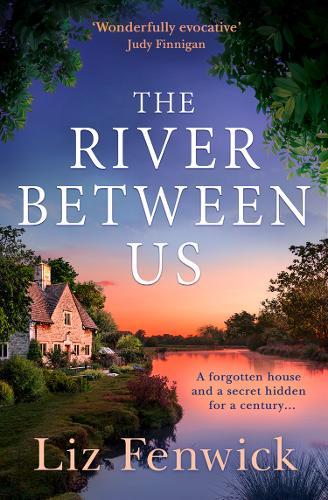 About The River Between Us
About The River Between Us‘Wonderfully evocative’ – Judy Finnigan
The Tamar river has divided Devon and Cornwall for centuries, but it’s also divided families, friends and lovers. The River Between Us is Liz Fenwick’s ninth novel set in Cornwall. It tells the story of a family torn apart during World War One, and how a woman who arrives to renovate a tumbledown cottage nearly a century later unravels a mystery, which has been concealed for generations.
About the Publishing Talk MasterclassesOur online masterclasses are talks, interviews, seminars and workshops from successful authors, publishers, agents and industry experts designed to help you fulfil your potential as an author.
Available on demand to Publishing Talk members.
Watch Now
The post MASTERCLASS: How to Create a Setting – with Liz Fenwick appeared first on Publishing Talk.


May 14, 2021
What should you expect from your literary agent?
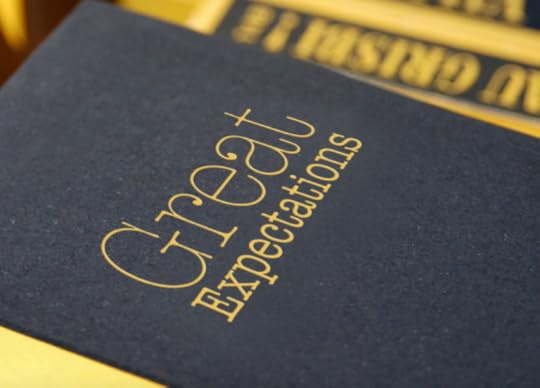
This article first appeared in issue 5 of Publishing Talk Magazine in 2014. Nelle Andrew is now at Rachel Mills Literary, and won Literary Agent of the Year at The British Book Awards 2021 (congratulations, Nelle!)
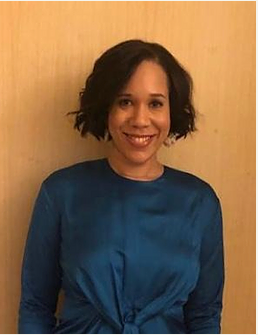 Our society forces us to compare ourselves against each other time and again, box-ticking the life thresholds from birth to death. With the advent of the internet this comparison is exacerbated, as we discover the truth behind the rise of our heroes and the charmed routes which they easily strolled down to glittering success.
Our society forces us to compare ourselves against each other time and again, box-ticking the life thresholds from birth to death. With the advent of the internet this comparison is exacerbated, as we discover the truth behind the rise of our heroes and the charmed routes which they easily strolled down to glittering success.
For modern authors this comparative nature is a terrible thing. Now any budding writer with a manuscript not only has to look up at the book spines bearing the names of all those they will be compared to, but they get to know the dizzying heights their potential peers reached: six figure advances; ten publishers frantically bidding for the book within 24 hours of receiving the submission; film rights sold for even loftier sums and how this all came about because they had a dream; watched two TV shows at the same time or simply saw a boy wizard on a long train journey and suddenly they were dominating the high street, Amazon and our TV screens…
Sound familiar? Of course the truth is we all love a ‘rags to riches’ story and the media most of all, so you don’t really hear about the struggle for five years and the countless rejections many authors face before becoming an international superstar. And the more tales you hear of outlandish money and tales of authors and publishers from the nightmarish ones (they hacked my book to pieces, sold it and when it bombed cancelled my contract) to the fantastical (they sent me on a first class trip to America for promotions of my book and I was speaking to 150 people each night at a time), it makes the process of getting published that much harder. Because you cannot help but compare yourself to these stories and as much as you try, they colour both your expectation and self-perception, making you see disaster and inadequacy where there is none.
The end is only the beginningAs an agent the first thing I do when I sign a client is to give them the realities of the publishing process and especially during submission. The first thing I try to dispel is the idea that the author’s job is done once they have given me the manuscript. Now every author starts the interview with the words: “I know it needs work…” but really I can see in their eyes that they want me to say, “No, not at all, it’s pretty much done.” Sorry – no. EVERY manuscript needs work and this can take weeks, months or even in some case years. Harper Lee spent two and a half years with her editor working on To Kill a Mockingbird and legend has it got so frustrated that at one point she threw the typed pages down onto the streets of New York. When she called her editor he calmly replied: “Go pick up every last page.”
So the first myth every budding author should dispel is that when they type ‘The End’ it really is the end…because in fact it is only just the beginning. A good agent will put you through your editorial paces and a good editor will do the same. This is a process and it starts from the moment you send out agent querying letters to the day of publication. It doesn’t end when the agent submits the book, that is when it really starts to ramp up.
Don’t expect to hit the jackpotSubmitting is when author expectations often come home to roost, and it does nothing but make the author feel bad about themselves. I have been lucky to sell a book in a week and others in the space of four months. All those stories you hear about massive advances happening within the space of ten hours of reading are the ones you hear about because they are rare: this happens to a handful of books a year out of a pool of thousands across all imprints and agencies. It is not something to aspire to; it is like winning the lottery, not only in terms of cash but in terms of the odds, which are stacked against you.
So don’t sit by the phone and computer screen, raging because the dream of those six numbers coming up hasn’t happened. It truly bears no reflection on the novel and its potential. The Help didn’t go for six figures at auction. It went quietly but passionately to an experienced editor just starting a new imprint – and the rest is history. It is the readers who make books the success they are. There are some books that the industry went crazy about and which have sunk without a trace; and others that no one expected to explode as they did and have come to define their genre.
Be honest about your goalsThe elephant in most authors’ rooms is the expectations you have for yourself. Most sensible authors will outwardly be humble, but are secretly and naturally thinking about the ultimate dream: commercial success with literary awards. That is the apex for any author career. But it doesn’t always happen and so it is important for you to be honest with yourself. Do you prize commercial success over reviews and critical acclaim? Are you the other way round? Do you care more about reputation than sales?
It’s okay whatever your answer is. But you have to be honest about it and you have to be honest with your agent about it too. Because the authors who are successful are those who made that choice and geared their writing towards that purpose. A publisher once said to me: ‘Only an author can kill their own book,’ and he was right. Because it’s the author who decides whether or not to take the advice given. Whether to promote, or pull away because they have expectations and ideas for themselves which they haven’t communicated to their agent and publisher who are left trying to guess.
Treat publishers and agents as partnersThe most important and potentially detrimental expectation of them all is what you expect from your publisher and agent. I have always seen agenting as something akin to marriage brokering: you are striving to find the perfect match for your author who gets who they are and what they are trying to do and will hopefully translate into a long and productive partnership.
I have no interest in mollycoddling my clients. In praising them without due or in serving them. I want to build their careers, correct their faults and make them rise to the zenith of their talent and potential. So I only choose authors I a) believe in and b) I believe I can work with along these principles. But not all authors want what I want or would be compatible with my style. I accept that – and they need to too.
Being honest about what you want from an agent and publisher ultimately means being honest with what you want from your career. But this is the biggest myth I can debunk: publishers and agents are not here to serve. We are partners: we cannot do this without you and you cannot do this without us. Equality and respect is key and when one of those things falls out of balance the whole relationship breaks down.
Don’t worry about your peers – just be yourselfWhen it works, writing and publishing can bring untold emotional and financial rewards. There is nothing more satisfying than seeing your book for the first time as a living thing ready to be shared with others. But before you start down this road, or even if you have taken the first footsteps remember this: your path is yours alone. Do not look to the left of you or the right of you. Be honest about who you are and what you want and forget the lives of your contemporaries. You can only be yourself, and it is the authors who remember this, and set their expectations aside in the light of this truth, who end up defining their genre rather than aspiring to it.
This article first appeared in issue 5 of Publishing Talk Magazine (2014)
The post What should you expect from your literary agent? appeared first on Publishing Talk.


May 6, 2021
10 hashtags for writers – and how to use them
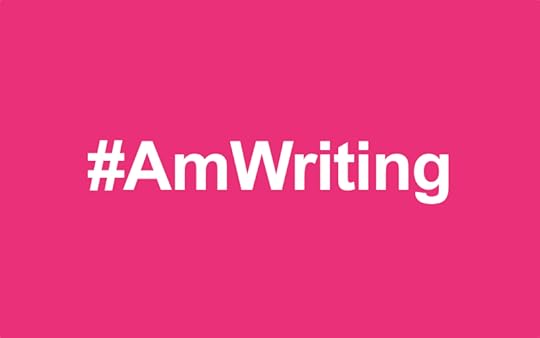
Reading Time: 7 minutes
Hashtags for writers are plentiful. But where do you start? Hashtags have not only endured in a fast-changing social media environment, they’ve become more important than ever. They started on Twitter, but they’ve since been adopted by Facebook, and especially by Instagram, where they’re essential for findability. They’re also used by Pinterest and LinkedIn – among other social media platforms. They’ve become so ubiquitous that no self-respecting conference or TV show would dare convene or broadcast without announcing an official hashtag.
What are hashtags?Hashtags are simply words or phrases used in tweets (and other social media updates) with the # symbol in front of them. Make sure you don’t use any spaces or punctuation, and they become links that, when clicked, reveal a timeline of everyone whose tweets contain that hashtag.
You don’t need to register them anywhere, or use pre-existing ones – just make them up. However, the most popular hashtags catch on and become established. Start typing a hashtag and you’ll see a suggested tag in the autocomplete, possibly with the number of people using that hashtag, depending on the platform.
The default view in Twitter shows you the Top tweets using the hashtag you’ve clicked on – but you can also click on Latest to see the most recent tweets using your selected hashtag. You can also filter by People, Photos, Videos, News and Broadcasts. And you also can see which hashtags – and other topics – are ‘trending’ on Twitter.
Use media in your tweetsTo make the most of your hashtags, include a relevant weblink where appropriate and where space permits. Images have become more important in Twitter over the last few years too – as have videos and GIFs (short looping videos and animations). You can share video or audio files (such a a link to a YouTube video), which will play directly in your Twitter stream. These all make your tweets far more visible than just a line of text, and you will see plenty of them attached to tweets using the following hashtags.
How many hashtags should I use?You can use more than one at a time – but the received wisdom on Twitter these days is no more than two or three for maximum engagement. On Instagram, however, the more the better: you can use up to 30 per post, with at least 11 resulting in greater engagement. If you’re using social ads, however – such as Facebook ads – it’s generally best not to use hashtags at all, since you want people to click on your link rather than any hashtags.
Make your hashtags accessibleIt’s best practice to write your hashtags in #CamelCase. Which means you should #WriteYourHashtagsLikeThis, with initial capitals for each word. It makes them easier for everyone to read – and it ensures that screen readers read them out correctly, for visually impaired people who rely on them. Read more about this in my post for Pilao Labs: 5 ways to make your social media more accessible.
10 hashtags for writersThere are many hashtags for writers that are useful to help you promote your books, connect with other writers, and – well – write. How do you use them, and which should you use? Click on a few of the following 10 hashtags for writers to get a feel for them and how you might use them.
1. #AmWritingWriting can be a solitary experience, and Twitter is a great way of connecting with other writers. It’s like a virtual watercooler. #AmWriting is the hashtag started by Johanna Harness in 2010 as a way of supporting writers and fostering a sense of community. Use it to tell us what you’re working on, support and learn from others, and share your experience.
Variations on #AmWriting include #AmEditing (if you’re at the editing stage) and #AmQuerying (writing a query letter or book proposal). If you’re at the editing stage, let people know and ask for any advice you need.
2. #WritersLife
Every. Day. Almost… #amwriting #amediting #amquerying pic.twitter.com/xrOhbKoLu0
— Kimberly Hayle (@kimberlyhayle) August 1, 2017
Use this to offer an insight into your life as a writer, your writing process – or a wry comment on what it’s like to be a writer, of the ‘you know you’re a writer when…’ variety.
3. #WriterWednesday
Writers never stop working, even reading counts as research… #amwriting #writerslife pic.twitter.com/UIp5f3KyFf
— Lacey London (@thelaceylondon) August 2, 2017
#WriterWednesday or #ww was originally intended as a way to give shout-out to writers / suggest authors to follow, or to share writing tips. In practice, it also covers pretty much anything else to do with writers or writing too.
I use it quite a lot (on a Wednesday), and even started a weekly paper.li online newspaper called The #WriterWednesday Weekly. This generates its stories from links shared by people on Twitter using #WriterWednesday, and tweets a link to itself. Weekly. On a Wednesday.
4. #WriteTip
Wishing you an awesomely productive #WriterWednesday! ???? #amwriting pic.twitter.com/SxGpjADF7p
— Heather Macht (@AuthorHMacht) August 2, 2017
While #WriterWednesday is often used to share writing tips, if you specifically want to share or find writing tips, use #WriteTip, #WritingTip or #WritingTips.
5. #WordCount
A story is a series of acts that build to a story climax which brings about absolute and irreversible change.#writingtips #amwriting
— Robert McKee (@McKeeStory) July 30, 2017
For some people, regularly sharing your word count in public can be a great way to stay focused. Use it to share your successes (and failures!) and motivate yourself and other writers.
6. #FollowFriday
Total #wordcount for July: 20,064 words! Met my goal! #amwriting pic.twitter.com/ilTqSUwrAu
— Amianne Bailey (@AmianneB) July 31, 2017
#FollowFriday or #ff is used on a Friday to suggest people to follow to your followers. Ideally, don’t just include a list of @usernames – tell us why we should follow the person or people you suggest. You can do them one at a time, or include a list of people grouped together by topic or reason.
#ff can help raise your profile too, if people return the favour, or at least thank you in public. This isn’t why you should do it – but it’s an added bonus if it happens. You also use #ff to thank people for helping you in some way.
7. #FridayReads
Meet some of our 2021 masterclass speakers – and give them a follow! @anitasethi @liz_fenwick @allegrahuston @nicolamay1 @jonreed @writersclub @meandmybigmouth @Eva_Bec @mollyflatt #FollowFriday #FF #WritingWorkshop #WriteTip #FridayReads https://t.co/4DQLnABo7P pic.twitter.com/dYKgmiMhHt
— Publishing Talk (@publishingtalk) April 30, 2021
Another thing you can do on a Friday is tell us what you’re reading. This is a great way of name-checking other authors your admire, often with a picture of the book and short review. You can also use #AmReading any day of the week – but #FridayReads is more often used for book reccomendations.
Ideally, include the Twitter @username of the author and official hashtag for the book if either exist; and a buying link to the book. If you have an Amazon Associates account, you might even earn a few dollars (pounds, euros etc.) if people click through and buy your #FridayReads recommendation.
If someone else gives a shoutout to one of your books – whether one that you’ve written, or one that you’ve published – like and/or retweet it on your own Twitter account.
Publishers can use #FridayReads to promote books. I often see them suggesting a Friday Read that happens to be a book that they’ve published that week – sometimes also combined with a giveaway.
You can use #FridayReads to share mini book reviews – whether your own, or quoting someone else’s review.
8. #WritingPrompt
“#AWrinkleInTime is this beautiful example of creating this other world..” –@TimothyAnne, Curatorial Museum Specialist @NMAAHC
#FridayReads pic.twitter.com/dHUdvaioD6
— AmyPoehlerSmartGirls (@smrtgrls) July 28, 2017
Use #WritingPrompt as a way of engaging with other writers by suggesting a trigger for a story; or to look for writing inspiration yourself. Also check #WritingPrompts (plural), since this is used too; and maybe throw in an #AmWriting for good measure!
9. #BookGiveaway
Write out the best or the worst day of your life. #writingprompt #amwriting
— Hope N. Griffin (@HopeNGriffin) July 28, 2017
Running a book giveaway on Twitter? Use #BookGiveaway to help people discover it. This can be used by publishers or authors. The entry criteria are usually as simple as ‘follow and retweet’ with a closing date. If you win, the person running the giveaway will usually DM (direct message) you to ask where you’d like your book sent.
10. #AskAgent
????GIVEAWAY????????RT + follow for a chance to win 1 hardcover copy of You, Me and Empathy – ends 15/08. #kidlitart #kidlit #bookgiveaway #giveaway pic.twitter.com/1xqzHBRvIH
— Sofia Cardoso (@sofiagcardosoo) July 31, 2017
You know that you should never pitch to an agent on Twitter, right? They really don’t like it. However, you should follow them, and many are prepared to give advice on Twitter. #AskAgent is the hashtag to use, which some agents will seek out to answer your questions. #AskPub and #AskEditor are variations to ask questions of publishers and editors. You can also use #AmQuerying to send your 280-character pitches out into the world.
Agents will sometimes announce when they’re available for questions using #AskAgent, with a date and time – or simply if they have a few minutes to spare!
More hashtags for writersInstagram hashtags
I can do a quick #askagent while kids are in wave pool if anyone has questions?
— Jenny Bent (@jennybent) July 30, 2017
While most of these hashtags can also be used on Instagram, there are a few Instagram-specific ones you should be aware of:
#bookstagram#instabooks#AuthorsOfInstagram#WritersOfInstagramDay-of-the-week hashtagsConsider the following daily hashtags to make yourself more visible on specific days of the week:
#MondayMotivation#TuesdayMotivation, #CharityTuesday, #TravelTuesday, #TuesdayThoughts; and and #TuesNews, which is used by members of the Romantic Novelists’ Association (@RNAtweets)!#WriterWednesday, #WednesdayWisdom#ThursdayThoughts, #ThrowbackThursday / #tbt#FollowFriday, #FridayReads#SampleSunday (for sample chapter giveaways)Seasonal hashtagsSome hashtags work well during specific months or seasons. #SummerReads is a seasonal alternative to #FridayReads. And if you’re doing NaNoWriMo (National Novel Writing Month) in November, find tips and support with #NaNoWriMo or #CampNaNoWriMo.
Genre and topic hashtagsIt can sometimes be useful to specify a genre in your tweets – particularly if combined with a #bookgiveaway – such as #CrimeFiction / #CrimeFic, #ChildrensBooks / #KidLit, #YAlit, #ScienceFiction / #SciFi, #RomanticFiction, #RomCom, #thriller etc.
You can also use hashtags to talk about publishing topics such as #SelfPublishing / #SelfPub / #IndieAuthors or #ebooks.
Chat hashtagsYou can find various genre and topic-based discussions on Twitter, which sometimes take place at specific times. Try, for example, #YALitChat, #LitChat, #SciFiChat or #ScriptChat.
Share your favourite hashtags for writersWhat other hashtags for writers have you come across or found useful? Do add them to the comments below.
This is an update of a post that first appeared on this site on 03 Aug 2011, 03 Aug 2017 and 03 Jan 2021.
Save
The post 10 hashtags for writers – and how to use them appeared first on Publishing Talk.


May 5, 2021
MASTERCLASS REPLAY: How to Write About Nature – with Anita Sethi
The video replay from How to Write About Nature, with Anita Sethi (Weds 26th May 2021). Anita Sethi was…
This content is for members only. Visit the site and log in/register to read.The post MASTERCLASS REPLAY: How to Write About Nature – with Anita Sethi appeared first on Publishing Talk.

May 4, 2021
The best piece of advice for memoir writers

This #StarWarsDay I’ve been thinking of the late, great Carrie Fisher – and one of my favourite pieces of memoir-writing advice from her:
“Take your broken heart, make it into art.”Which I think is excellent advice for memoirists, (semi)-autobiographical novelists and – well – any writer, really. We all have difficult, challenging experiences in life. Use them as material. Draw on them, and create something wonderful. Carrie Fisher herself was a great – and very funny – memoirist, including Wishful Drinking and The Princess Diarist. And her debut novel Postcards From the Edge drew heavily on her life experience. But then, don’t all debut novels?
Advice for memoiristsFor practical advice on turning your own life into compelling prose, we have a couple of great masterclasses coming up for you, by two authors who have turned difficult life experiences into beautiful books. One of which continues the Hollywood theme!
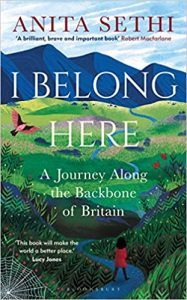 Anita Sethi experienced a race hate crime and turned it into a positive journey of reclamation, across the Pennine Way in northern England – and a beautifully-written book: I Belong Here, the first of her nature writing trilogy. Her masterclass How to Write About Nature (Wed 26 May) explores how to observe and describe the natural world in your writing. It also looks at the wide-ranging form that nature writing is, taking in memoir, current affairs, history and more.
Anita Sethi experienced a race hate crime and turned it into a positive journey of reclamation, across the Pennine Way in northern England – and a beautifully-written book: I Belong Here, the first of her nature writing trilogy. Her masterclass How to Write About Nature (Wed 26 May) explores how to observe and describe the natural world in your writing. It also looks at the wide-ranging form that nature writing is, taking in memoir, current affairs, history and more.
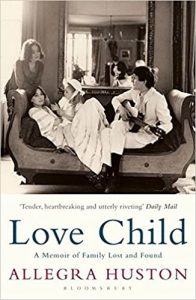 Allegra Huston had an insecure and somewhat chaotic childhood, following the death of her mother, being moved around the world to live with different relatives – including her father, the film director John Huston. Her bestselling book Love Child is a memoir of family lost and found. Allegra also teaches memoir writing workshops, and is running a masterclass for us on How to Write a Memoir (Wed 14 Jul).
Allegra Huston had an insecure and somewhat chaotic childhood, following the death of her mother, being moved around the world to live with different relatives – including her father, the film director John Huston. Her bestselling book Love Child is a memoir of family lost and found. Allegra also teaches memoir writing workshops, and is running a masterclass for us on How to Write a Memoir (Wed 14 Jul).
I hope you can join us. Earlybird tickets are available now – and all workshops are FREE to members.
Image: VENICE, ITALY – AUGUST 28: Carrie Fisher attend the Opening Ceremony And ‘Gravity’ Premiere during the 70th Venice International Film Festival on August 28, 2012 in Venice, Italy. Matteo Chinellato / Shutterstock.com
The post The best piece of advice for memoir writers appeared first on Publishing Talk.


May 1, 2021
The book publishing process – an 8-step guide
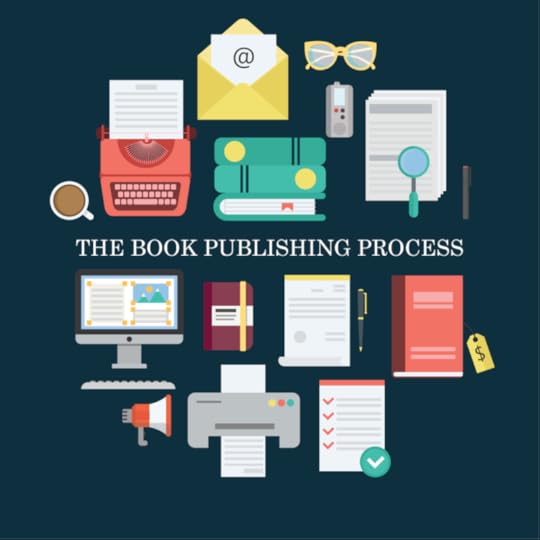
Learn more about the book publishing process on our two-day online writer’s conference How to Get Published – 18-19 Sep 2021. Members get a 25% discount.
The publishing process can seem opaque to new authors. Publishing a book is a special, almost magical thing. Something that was in your thoughts and imagination – a new idea, some valuable information, a whole fantastical world you’ve dreamed up – gets transferred from your head into many other people’s heads, via some ink on a page or pixels on a screen. These are people you may never meet, but their lives may be transformed by what you’ve written.
But what happens in between your head and their heads? What are the key stages, how long does it take, and what will you have to do? There’s no reason you should know any of this – unless you have some experience of working in a publishing house. Here’s how the publishing process works.
The book publishing process at a glanceIdea. All books start with an idea. This may come from you, your agent or a publisher.Acquisition. The book acquisition, or commissioning process, is how a new book gets signed up by a publishing company – usually by a commissioning editor. If you write fiction, you’ll need an agent.Design. A cover designer interprets your book into an eye-catching, ‘pickupable’ cover.Production. The technical process of how a raw manuscript is transformed into a physical (and digital) book.Marketing. How readers get to know about your book. May include advertising, online and social media marketing – and even guerrilla marketing.Publicity. Related to marketing, a publicist will get people talking about your book in the media – and may get you writing for newspapers and speaking at literary festivals.Sales. Sales reps sell your book to bookshops and other retailers, including online retailers such as Amazon.Distribution. The logistics end of the business – from printer to warehouse to bookshop.The book publishing processHere’s a more detailed, eight-step guide to the publishing process. Whatever you’re writing, your book will follow this same basic workflow. Note that the timeline of what happens when isn’t completely linear – some of these stages will overlap. It takes many teams in different departments to publish a book, and they will work together from the start.
1. IdeaYou’ve had a brilliant idea for a book! What now? All books start as an idea. But, while that idea usually comes from the author, it can also come from an editor or literary agent. Ideas can come from:
You. If you’re a first-time novelist, the idea will almost certainly be yours alone.Publisher. If you’re an academic, or write business books or other non-fiction, the idea may come from a publisher, based on their knowledge of the market.Agent. If you’re an established author – in any genre – and have a literary agent, you will have regular meetings and discussions with your agent about your career. Have lots of ideas for your next book? Your agent may guide you towards the one to focus on. He or she may also come to you with an idea, based in their knowledge of what publishers are looking for, what’s current in the market, and what fits your strengths.Wherever an idea comes from, it’s you who’s going to have to write it – so make sure it’s something that can sustain your interest over the long process of writing!
2. AcquisitionThe book acquisition, or commissioning process, is how a new book gets signed up by a publishing company. It is the responsibility of a publisher who may have a job title such as editor, senior editor, publisher or editorial director. These job titles mean slightly different things depending on the type of publisher. In academic publishing, editorial director or publishing director means you’re responsible for the editorial department and have a team of commissioning editors (I know because I was one). In fiction, editorial director tends to mean a commissioning editor responsible for a specific imprint of that company.
Whatever the title of the editorial person you work with in a publishing company, they will be your main point of contact as an author throughout the publishing process of your book – from manuscript to published book. Though you will interact with people from other departments from time to time too.
Your editor’s main job is to acquire, or commission, new books. This works a little differently depending on the type of publishing company:
Fiction. Almost exclusively via literary agents. Don’t even think of sending your manuscript to a publisher, in the hope of being discovered in the ‘slush pile.’ This doesn’t happen any more (if it ever did). Editors in fiction houses have good relationships with a range of literary agents. Your agent will pitch your book to the publisher or publishers they think will be interested and who are a good fit. This means that, for fiction authors, your most important first step is to get a literary agent.Academic. If you’re an academic, an editor may approach you with an idea, based on your reputation, research or course you teach. I used to do this all the time when I when I was a textbook publisher. Editors would go ‘campus calling’. We would visit university campuses to speak to lecturers about their courses, what textbooks they were using – and what books they were writing, wanted to write – or could be persuaded to write. As an editor, I would often help academics work up a book proposal and develop an idea.Non-fiction. For other non-fiction, it can happen either way round. It depends on the type of non-fiction. Memoir is considered a literary form, and goes the same route as fiction (via an agent). Business books may or may not be agented. My traditionally published book, Get Up to Speed with Online Marketing, was published by Pearson Business (2nd edition, 2013), and I didn’t have an agent. The process was more similar to academic publishing. But I did have access to the legal experts at the Society of Authors to look over and offer feedback on my publishing contract.Your editor is the key lynchpin, from your point of view as an author. They’ll track the pogress of your book throughout the production cycle. They’ll liaise not only with you and your agent, but with other in-house departments, such as design, production, marketing and sales. It’s really a project management role – once a book has been commissioned.
In order for a book to be taken on by a publishing company, your editor has to persuade their colleagues. So it pays to have an editor who is enthusiastic about your book and will champion it in-house. Publishing companies have a regular editorial meeting or publishing meeting, at which editors present potential new titles for publication. Other key departments also attend this meeting, such as marketing, sales and production.
Each title must have its own ‘P&L’ (profit and loss), i.e. a set of costings. How much will it cost to produce the book? How many copies will we print? How many can we expect to sell? At what price? This all comes together in a book proposal put together by an editor, of which your book proposal as an author is only one part. It includes competition analysis, market analysis, and a detailed costings spreadsheet.
Everyone at the meeting must agree to the book being taken on – though there may be a discussion about price, print run, production costs and other aspects of the publishing strategy. The project may need to come back to the meeting with changes or new costings following these discussions. But, in practice, most books are accepted at these meetings – simply because they (should) have been thoroughly discussed with all departments concerned in advance, each of which will have contributed something to the proposal being discussed.
Once accepted, the next stages can begin.
3. DesignDesign is one of the most creative parts of the publishing process. Book cover designers can come up with astonishing, memorable representations of the books they work on. Think about The Handmaid’s Tale, A Clockwork Orange and Nineteen-Eighty Four – a book with a vast number of covers over the years – but the 2013 ‘censored’ re-release is particularly arresting.
Dystopian literature aside, whatever you write – from children’s to chick-lit, from textbooks to gardening books, a good designer helps sell your book.
It’s a designer’s job to create an intriguing, attractive, enticing cover that faithfully represents your book, and makes people want to pick it up in a bookshop to learn more about it. You want a book cover that publishers call ‘pickupable’. And that applies just as much to online bookstores – if not more so. To work on Amazon, your cover must also catch the eye when viewed at the small sizes you get in search results. And ideally have a readable title too. It’s a tall order – but all in a day’s work for a cover designer.
The cover designer may be in-house or freelance. Many publishing houses use both – and I’ve worked with both. They will usually be briefed by a combination of editor and marketer, and there will likely be several iterations of a cover. Your publisher will brief the designer on your book, its target readership, and enough of its content for them to make some informed design choices. They may include some design preferences such as colours, whether it should be photographic or graphic – and you may get a chance to input into this (but you may not). The publisher will also brief on technical requirements, such as size and spine width. If the book is part of a series, this will be a key part of the brief, as the cover will need to be consistent with an overall series design.
The publisher may then be presented with half a dozen ‘cover roughs’, based on the brief, of which one may be worked up into a final cover. You may not see all the roughs – but you should be consulted about the cover design at some stage. Even if your publisher does get to make the final choice.
4. ProductionThis is the part of the process that turns your raw manuscript into a physical book. And likely a digital book too. And an audiobook. You’ve sent in a stack of A4 printed paper, neatly double-spaced. Or, more likely these days, you’ve emailed a Word document to your editor. All those words you’ve finally released into the world.
But your publisher doesn’t just slap a cover on it and put it in a shop. There’s a LOT of work to do to transform your text into a beautifully-produced actual book. This is, in fact, the longest part of the process. It can take a year or more from delivery of your final manuscript until you see your book on the shelf of your local bookshop.
Yes, publishers can move faster, especially if there’s an urgent, topical reason to get a book out quickly. But this lead time often isn’t purely about how long the physical production process takes. It’s also about picking the right release date for your book to give it maximum exposure. Is your book a perfect summer read? Publish it in the spring. Is it an ideal Christmas gift? Publish it in October. ‘Super Thursday’ – the first Thursday in October – is the big autumn release date for trade hardbacks targeting the Christmas market. Then again, there are SO many titles published on this day, your publisher may want to pick another date so you don’t get lost in the crowd. It all depends on your book, it’s market, and the marketing plan.
Here are some of the people you can expect to meet along the – possibly long – production journey.
A production editor is likely to be the in-house staff member in charge of this stage, and will liaise with editorial and design. Production editors work with text designers, copy editors, typesetters and proof readers. These are freelancers, and you can expect to hear from them too – particularly your copy editor.
A text designer isn’t someone you’re likely to deal with much, unless your book has lots of complicated textual features. I used to work with text designers from time to time as a textbook publisher. They would work on large texts that had heavily designed elements, such as chapter summaries, bullet points, questions and quizzes, boxes, case studies, illustrations and so on. Sometimes the author would see some sample designed pages in advance. A good text designer will create an engaging textbook design with elements that hang together on the page, and make the material clear and readable.A copy editor is your best friend – and the person you will hear from most. They will send you queries – lots of queries – and will make your words better. They will check for consistency, readability, sense, structure, typos and more. They will even fact-check. This is important. If you’ve written a novel set in the 1970s and your young protagonist takes a £5 note from the fruit bowl to spend at the local funfair, your copy editor will say: “Hang on – that would be about £100 in today’s money. It should be 50p?” If your narrator sees an egret by the canal in the English Midlands in the 1980s, they will say: “But there were no egrets in that time and place.” These are real examples from authors I know, and demonstrate that a good copy editor is worth their weight in gold.A typesetter is someone who, in the olden days, used to literally set physical, metal type into printing presses. Today it’s a digital process. Though we still call the spacing between lines ‘leading’ (it used to be actual strips of lead). Typesetting includes the choice of typeface for the text of your book and its chapter headings and subheadings, and other textual elements. They may work with a text designer. If you look in the inside pages – the prelims – of any published book, you may see in the credits something like: ‘Typeset in Bembo by Palimpsest Book Production Limited, Falkirk, Stirlingshire.’ (I took that from On Writing , in case you were wondering.)A proof reader comes in towards the end of the process, reads your almost-final book (your proof), and makes any last-minute corrections. This isn’t a read for sense, facts, structure and so on. It’s too late for that now. This is a read for spelling mistakes and typos. Yes, there will still be some at this stage. Possibly quite a lot. It’s why, when publicists send out ‘proof copies’ in advance of publication, to journalists, book reviewers, book bloggers, and anyone else who might be able to help with the promotion of the book, they always have, printed on the cover: ‘UNCORRECTED PROOF – NOT FOR SALE OR QUOTATION’. This isn’t a version of your book you want just anyone to see – yet. Those of us who read books at this stage know there will be some mistakes. It’s fine, it’s expected. But you really don’t want a general reader judging your work at this stage. By the time a proof reader is done, your book will be largely mistake-free. But not completely. No published book is. You proof and you proof, and still a few errors slip through. (It’s why I like online content – you can correct your mistakes, and no one will know!)At the end of all that, print-ready PDFs are sent to a printer, along with the final book cover design files. The printer prints and binds copies, and sends the to the warehouse (see Distribution).
Digital production will happen at the same time, to turn the final, edited version of your book into an ebook. This is a technical job, and will mean your book is available in a variety of digital formats for different ereaders and platforms.
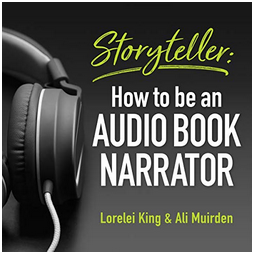 Audio production may or may not happen, and may come later if it does. But if you do have an audiobook version of your book, you will be involved. You may even be asked to read it yourself! Or you may be consulted on which actor(s) would be on your wish list to read it. Provide a range of options – and aim high! Don’t be intimidated by the fame of an actor if you think they would be perfect to read your work. But provide some realistic options too, in case your top choice isn’t available. And think too about less-famous readers who would do a brilliant job of bringing your words to life. Listen to audiobooks yourself.
Audio production may or may not happen, and may come later if it does. But if you do have an audiobook version of your book, you will be involved. You may even be asked to read it yourself! Or you may be consulted on which actor(s) would be on your wish list to read it. Provide a range of options – and aim high! Don’t be intimidated by the fame of an actor if you think they would be perfect to read your work. But provide some realistic options too, in case your top choice isn’t available. And think too about less-famous readers who would do a brilliant job of bringing your words to life. Listen to audiobooks yourself.
Audiobook narration is a very specific skill – especially if your book has a lot of different characters who all need to be clearly distinguished by a listener. For more insights into the business of audiobook narration, I recommend Storyteller: How to be an Audio Book Narrator by Lorelei King and Ali Muirden. This is essential listening – especially if you’re narrating your own book!
5. MarketingCongratulations! You have an actual, physical, printed book! And a digital one. And possibly an audio one. Now: does anyone actually know about it? This is where marketing comes in – and why it starts EARLY. You may work with the marketing manager for your book – or you’ll liaise with your editor, who will.
You may even meet a marketing manager before your book is signed up by the publisher. I know authors who, with their agent, have a meeting with a potential new editor who has shown an interest in their book. And the marketing manager is also at the meeting. Why? Because one question you and your agent want to know, early on, is: what will you do for my book? What marketing effort will you put behind it?
But even if you never meet the person responsible for the marketing plan for your book, there will be one. And it starts as soon as your book is commissioned. The actual marketing won’t start until about six months before your book publishes. Any sooner, and you risk building buzz about a book that everyone’s forgotten about by the time it comes out. But six months gives time to announce the book, start getting pre-orders on Amazon, tell bookshops about it, and tell journalists and book bloggers. Big publishers often have events for journalists and book bloggers, where they present their forthcoming titles. I’ve been to them. There may be half a dozen or so books, presented by the authors themselves, at an evening do with drinks and nibbles. So be prepared for that, if you’re asked to participate in such an event. They’re quite fun and friendly!
That’s all about initial awareness. It’s almost ‘pre-marketing’. What about the marketing that takes place once there’s something to buy? Depending on the budget available for your book (this may be tiny!) your publisher may run ad campaigns, from physical posters to digital banners and Facebook ads. They will have an online marketing plan, including social media, which they’ll want you to get involved with – especially if you have a social media presence (which you absolutely should). There may be an email marketing campaign, and you may need to take part in a blog tour (a series of guest postings).
There may even be more ‘guerrilla’-style marketing. I remember turning up to the London Book Fair a couple of years back, to find myself caught up in a protest. A dozen or so handmaids, straight out of Gilead, dressed in red robes and white bonnets, waving placards. It was, of course, pre-launch guerrilla marketing for Margaret Atwood’s The Testaments.
Whatever your publisher does for you marketing-wise, you will need to get involved yourself. This horrifies some authors, who would rather spend their time writing rather than marketing! If that’s you, take a look at these approaches and ideas for 10 ways to market your book if you really don’t like marketing.
6. PublicityPublicity is closely related to marketing, and the two work hand-in-hand, with the same aim of connecting your book to your readers. But it is a separate activity, focused on a specific task: getting your book talked about in the media. That doesn’t necessarily mean on breakfast TV (though it might). It can mean anything from engaging with book bloggers to writing a piece for a national newspaper to speaking at a literary festivals to doing a book signing event at your local bookshop.
If you’re speaking at events, keep your publicist in the loop – they’ll want to know. And if your publicist has planned a series of events for you, they may come out on the road with you to support you.
7. SalesEach aspect of the publishing process is about selling. You sell an idea to your agent, who sells it to an editor, who sells it to their colleagues to get it accepted. Then the finished book must then be sold to retailers, who sell it to their customers.
Every publisher has a sales team. Their job is to sell your book – but not to readers: to retailers. We’re talking about trade sales here – sales to the book trade, which includes chain and independent bookstores, and anywhere else books are sold – such as supermarkets. Sales to Amazon and other online retailers may be handled by a digital sales team or sales manager. Academic publishers will also have an academic sales team, whose job it is to get books on university reading lists. There may also be a library sales team, and special sales deals done with bulk orders to, say, institutions. But this is all to intermediaries rather than to the end reader. Unless it’s something called direct sales.
Publishers have sales reps who go out on the road, calling on bookshops in their territory and showing them what books they have coming out in the next six months. This involves flipping through a portfolio of cover designs with a few bullet points of marketing blurb. This is one reason cover design needs to happen reasonably early in the process.
Booksellers are busy people (I know – I used to be one). They have customers to serve, and a sales rep will typically be showing their wares on the shop floor while people are milling about. There may only be seconds to show each book, and for the bookseller to make a decision about how many copies to order (if any). So reps must be really focused about they key selling points of your book, and the cover must do its job.
It helps if the bookseller has done well with a similar title in the past. But a bookseller will often take a punt on a new author with no track record, if the concept is compelling enough – and if the publisher is supporting it with some marketing and publicity effort. So a rep will often also talk about what the publisher is doing in terms of advertising, promotion and media.
Booksellers buy books at a discount off the recommended retail price – typically around 30%. This is their margin. The biggest retailers with the most buying power – Amazon and supermarkets – demand the biggest discounts. The risks are low for retailers, because books are usually sold to them on a ‘sale or return’ basis. If they sell your book – great! If not, they can return copies and get their money back.
The other thing a sales department does is keep their fingers on the pulse of the book market – and feed that market intelligence back to the publisher. This can then inform commissioning decisions, in a sort of feedback loop.
Sales reps are at the hard edge of what readers actually want. Booksellers know their market, and what their readers are buying. This informs their buying decisions. Sales reps have an easier job selling to bookshops if their wares match what a bookseller can actually sell. However much other departments may love and believe in a book, there’s no hiding place when it comes to cold, hard sales. Even if a bookseller takes multiple copies of a book they like, if they don’t actually sell it, it gets returned. Readers ultimately determine the success of any title.
8. DistributionThis is the logistics end of the business. Your book is published, everyone knows about it, there’s some media buzz, you’ve been on Radio 4, and bookshops have ordered lots of copies. Now the copies need to get from printer to warehouse – and warehouse to bookshop. Orders are processed and books are delivered. Wholesalers are the intermediaries here. There are a handful of book distributors in the UK, who bookshops order from. The largest of these is Gardners.
Some larger publishers distribute their own books. Hachette also owns book wholesalers Bookpoint and LBS – all of which are now part of Hachette Distribution. Macmillan (where I used to work) has a separate business unit, Macmillan Distribution, which not only distributes Macmillan titles but books from a wide range of other publishers, including Bloomsbury.
Professional authors know the publishing processNow you understand the book publishing process, you’ll be better equipped to navigate your path to publication. You won’t have any nasty surprises – like discovering it can take 18 months for your book to be published once you’ve submitted your final draft! You’ll go into publishing meetings better informed. Which means you’ll come across as a professional author who ‘gets’ the industry, knows what is expected of you – and what you should expect of your publisher. Now – go and finish that book!
Learn more about the book publishing process on our two-day online writer’s conference How to Get Published – 18-19 Sep 2021. Members get a 25% discount.
The post The book publishing process – an 8-step guide appeared first on Publishing Talk.


April 26, 2021
MASTERCLASS: How to Write About Nature – with Anita Sethi (Online, Wed 26th May, 2021)
Nature writing is enjoying a boom. Join the author of I Belong Here for an enlightening workshop on how to observe and describe the natural world.
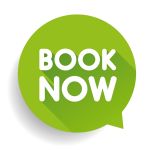 Masterclass: How to Write About Nature
Masterclass: How to Write About Nature
Speaker: Anita Sethi
When: Wednesday 26th May 2021, 6:30pm UK time (BST)
Where: Online – join us from anywhere in the world
Price: £15-£30 / FREE to members
Booking: Eventbrite (Limited places available – book early!)
This post contains Amazon affiliate links to the books mentioned. See our Affiliate policy for more details. Books by our masterclass speakers are also available in our Bookshop.org bookshop.
Explore nature writing with Anita Sethi
Has getting out into nature helped you during lockdown? How do you observe, describe and incorporate the natural world in your writing? Anita Sethi lifts the lid on nature writing.
Nature writing is nonfiction or fiction prose or poetry about the natural environment. It encompasses a wide range of writing, from natural history to memoir to travel writing, history and current affairs.
There has been a resurgence in nature writing in recent years. The ‘new nature writing’ is a publishing phenomenon, and often includes personal observations and reflections upon nature. It may be deeply personal, and explore the potential of the natural landscape to help overcome grief and trauma, in beautifully-written prose.
With such a range of approaches, themes and forms to explore, where do you start?
What we will cover:What is nature writing?How to observe and describe natureHow the ‘new nature writing’ opens up new possibilitiesHow to put yourself into the landscape in your writingApproaches, tips, tools and techniquesWorkshop includes:Valuable insights, tips and advice from Anita SethiChance to ask Anita anything about nature writing – and her bookAccess to a video replay of the eventAbout Anita SethiAnita Sethi was born in Manchester, UK where her love of nature first flourished in childhood, in wild urban spaces. I Belong Here is the first in her nature writing trilogy. She has contributed to anthologies including Seasons, Common People and Women on Nature, has written for The Guardian, Observer, Sunday Times, Vogue, BBC Wildlife and New Statesman, and appeared on various BBC Radio programmes.
She has been shortlisted for Northern Writer of the Year at the Northern Soul Awards and Journalist of the Year at the Asian Media Awards, and has judged the British Book Awards and Society of Authors Awards. Her career highlights include going birdwatching with Margaret Atwood in the UK’s oldest nature reserve.
Follow her on Twitter or Instagram at @anitasethi.
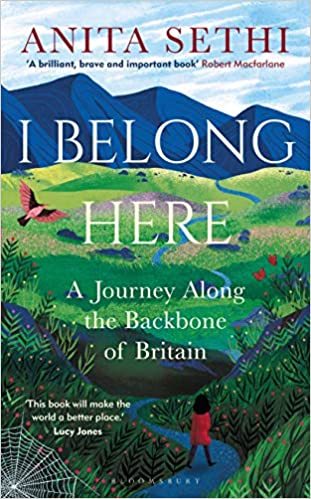 About I Belong Here
About I Belong Here‘A brilliant, brave and important book’ – Robert Macfarlane
I Belong Here: A Journey Along the Backbone of Britain is the first book in Anita Sethi’s nature writing trilogy. It is a journey of reclamation through the natural landscapes of the North, brilliantly exploring identity, nature, place and belonging. Beautifully written and truly inspiring, I Belong Here heralds a powerful and refreshing new voice in nature writing.
Anita Sethi was on a journey through Northern England when she became the victim of a race-hate crime. The crime was a vicious attack on her right to exist in a place on account of her race.
The Pennines – known as ‘the backbone of Britain’ – called to Anita with a magnetic force; although a racist had told her to leave, she felt drawn to further explore the area she regards as her home, to immerse herself deeply in place.
Anita transforms her personal experience into one of universal resonance, offering a call to action, to keep walking onwards. Every footstep taken is an act of persistence. Every word written against the rising tide of hate speech, such as this book, is an act of resistance.
About the Publishing Talk MasterclassesOur online masterclasses are talks, interviews, seminars and workshops from successful authors, publishers, agents and industry experts designed to help you fulfil your potential as an author.
 You will be sent email reminders with joining instructions two days, two hours and 10 minutes before the start time of 6:30pm UK time (BST) on Weds 26th May 2021.
You will be sent email reminders with joining instructions two days, two hours and 10 minutes before the start time of 6:30pm UK time (BST) on Weds 26th May 2021.
You can join this masterclass from anywhere in the world. If you’re outside the UK, please use this time zone converter to check your local live streaming time.
10:30am PDT | 11:30am MDT | 12:30pm CDT | 1:30pm EDT | 6:30pm BST | 7:30pm CEST
Book now
The post MASTERCLASS: How to Write About Nature – with Anita Sethi (Online, Wed 26th May, 2021) appeared first on Publishing Talk.


April 25, 2021
Publishing Talk Membership is now open!

Publishing Talk membership is now open – and you’re invited! Membership is the best way to access everything our educational community has to offer new and emerging authors throughout the year. Join us for free access to our masterclasses – plus other discounts, downloads, benefits and resources to help you become a successful published author.
Benefits of membershipJoin Publishing Talk to enjoy the following benefits – totalling over £700 in value – so far!
FREE masterclasses. FREE access to all our new masterclasses. We anticipate 10 new masterclasses per year. Value: £300.FREE replays of our previous masterclasses too. Current value: £90 – and growing.FREE PDF downloads. Such as chapters, tip sheets or masterclass handouts.25% off Prolifiko’s 4-Week Writing Bootcamp to boost your productivity25% off ALL creative writing titles from Teach Yourself books25% off the Writers’ & Artists’ Yearbook and the Children’s Writers’ & Artists’ Yearbook 30% off Tips from a Publisher: A Guide to Writing, Editing, Submitting and Publishing Your Book 25% off digital editions of How to Edit and be Edited and How to Read for an Audience 25% off our online How to Get Published writers’ conference (Sep 2021)25% off our online course ‘Social Media for Authors’ – launching later this yearMembers-only Facebook Group to help you network with fellow authors.
PLUS more benefits, perks and discounts, coming soon!
See our full list of member benefits and details of how to join. I hope to welcome you as a member soon.
The post Publishing Talk Membership is now open! appeared first on Publishing Talk.


April 22, 2021
MASTERCLASS: How to Create a Setting – with Liz Fenwick (Online, Weds 23rd Jun, 2021)
 Masterclass: How to Create a Setting
Masterclass: How to Create a Setting
Speaker: Liz Fenwick
When: Wednesday 23rd June 2021, 6:30pm UK time (BST)
Where: Online – join us from anywhere in the world
Price: £10-£30 / FREE to members
Booking: Eventbrite (Limited places available – book early!)
This post contains Amazon affiliate links to the books mentioned. See our Affiliate policy for more details. Books by our masterclass speakers are also available in our Bookshop.org bookshop.
How to Create a Setting – with Liz FenwickHave you read a book where you felt the wind, tasted the air, and shivered with the protagonist? Learn how to use the setting to breathe life and an extra dimension into your stories. Discover tools to bring your location alive.
Liz Fenwick, according to The Guardian is ‘the queen of the Cornish contemporary novel’, and has used location as her brand. Her books are immersed in Cornwall past and present. How does she make this happen?
How do you create a setting? How does setting work in a novel? Is it more than just a mark on the map?
What we will cover:How setting is not just descriptionHow to use the physical world as a way to open up your characters’ thoughtsHow to visualize your setting to build your world – and storyWhy setting isn’t just a place on the map but also time – both historical and seasonalHow setting impacts a character – physically and mentallyWorkshop includes:Valuable insights, practical tips and inspiring advice from Liz FenwickYour chance to ask Liz anything about writingA one-page PDF download with additional tipsAccess to a video replay of the eventAbout Liz Fenwick‘The queen of the Cornish contemporary novel’ – The Guardian
Liz Fenwick was born in Massachusetts and after 10 international moves she’s back in the UK with her husband and two mad cats. She made her first trip to Cornwall in 1989 and bought her home there seven years later. She’s a bit of a global nomad, but her heart forever remains in Cornwall.
Liz is the author of eight previous novels set in Cornwall: The Cornish House, A Cornish Affair, A Cornish Stranger, Under a Cornish Sky, A Cornish Christmas Carol, The Returning Tide, One Cornish Summer and The Path to the Sea.
For more information visit lizfenwick.com, or find her on Twitter or Instagram at @liz_fenwick – where you can follow her regular #PlotWalk!
 About The River Between Us
About The River Between Us‘Wonderfully evocative’ – Judy Finnigan
The Tamar river has divided Devon and Cornwall for centuries, but it’s also divided families, friends and lovers. The River Between Us is Liz Fenwick’s ninth novel set in Cornwall. It tells the story of a family torn apart during World War One, and how a woman who arrives to renovate a tumbledown cottage nearly a century later unravels a mystery, which has been concealed for generations.
About the Publishing Talk MasterclassesOur online masterclasses are talks, interviews, seminars and workshops from successful authors, publishers, agents and industry experts designed to help you fulfil your potential as an author.
 You will be sent email reminders with joining instructions two days, two hours and 10 minutes before the start time of 6:30pm UK time (BST) on Weds 23rd Jun 2021.
You will be sent email reminders with joining instructions two days, two hours and 10 minutes before the start time of 6:30pm UK time (BST) on Weds 23rd Jun 2021.
You can join this masterclass from anywhere in the world. If you’re outside the UK, please use this time zone converter to check your local live streaming time.
10:30am PDT | 11:30am MDT | 12:30pm CDT | 1:30pm EDT | 6:30pm BST | 7:30pm CEST
The post MASTERCLASS: How to Create a Setting – with Liz Fenwick (Online, Weds 23rd Jun, 2021) appeared first on Publishing Talk.



